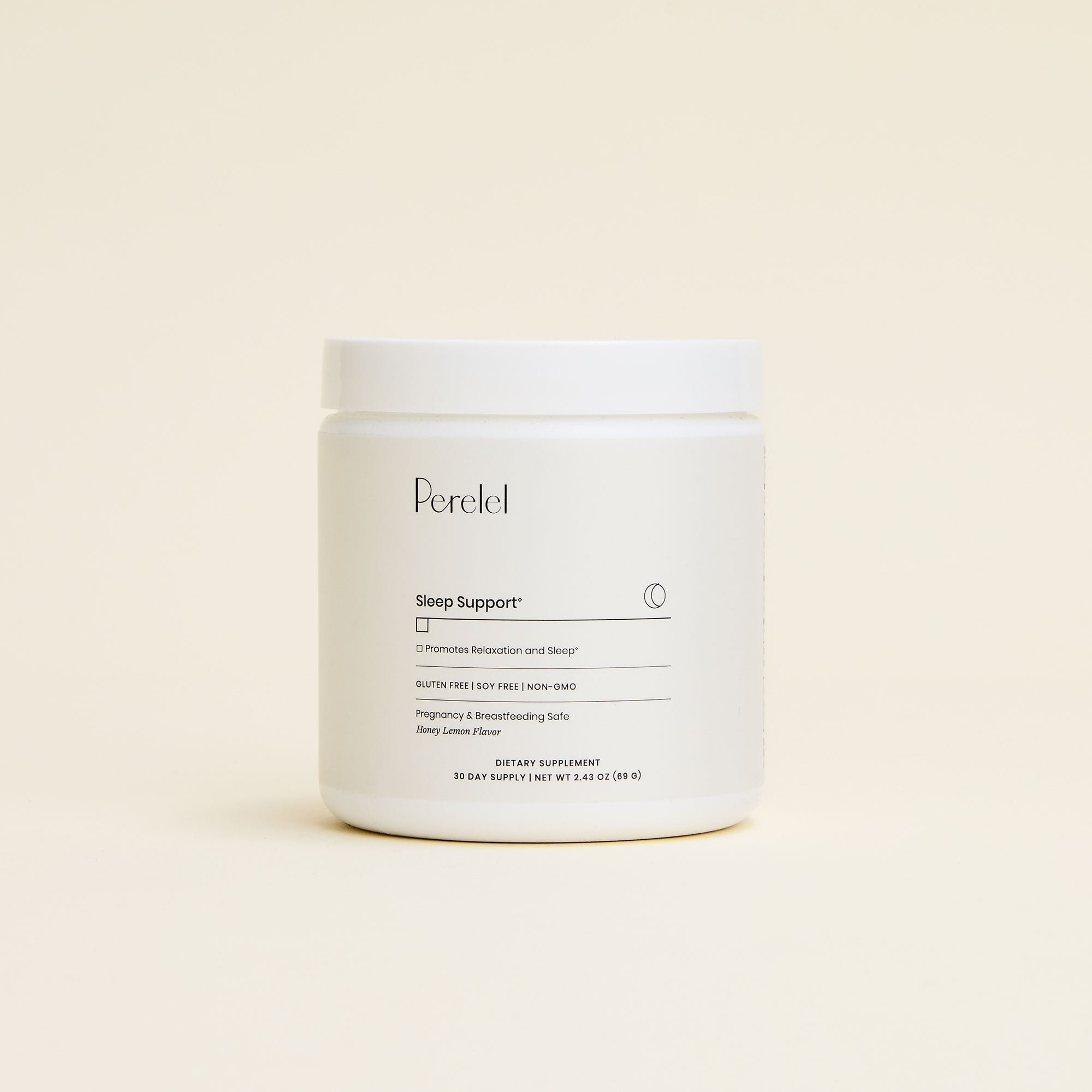Important question: Are you paying attention to your pelvic floor? If you’re newly postpartum, recovering this part of your body is vital—whether you had a vaginal or cesarean delivery. (Just the physical demands of being pregnant place significant weight on the pelvic floor muscles!)
First off: What is your pelvic floor? It’s a system of muscles that span the bottom of the pelvis and support organs like the bladder, bowels, and uterus. Those muscles help stabilize your abdominal muscles and core, support sphincter control to prevent leaking, and contribute to sexual function and response. Your pelvic floor plays a crucial role in everything from birthing your baby to peeing to having sex. And understandably, after labor and delivery, your pelvic floor could be a bit off-kilter.1
To help break down your pelvic floor symptoms and learn how to support your postpartum recovery with different techniques and exercises, we brought in pelvic floor therapist and Perelel Panel expert Allison Oswald, PT, DPT, WCS, CPT. Check out her advice below.
Your postpartum pelvic floor symptoms
As our bodies go through the process of pregnancy, labor and birth, the muscles of the pelvic floor stretch tremendously—and if you experienced vaginal birth, they may have even been torn and stitched up. The extent of this impact can depend on the length of your delivery, position, and more.
Some of the symptoms that can manifest as a result of these pelvic floor changes include incontinence, lower back pain, pelvic pain or pressure, constipation, sexual discomfort, and urgency. Some women might experience prolapse, which is when one of the pelvic organs slips out of place. If you’re experiencing pelvic pressure, a bulge, or any severe symptoms, it’s best to check in with your care provider.
And just as you would rehab an injured shoulder or leg muscle, it’s just as important to give a little T.L.C. to your pelvic floor. Let’s talk about some techniques and pelvic floor exercises below.
So I want to recover my pelvic floor. Now what?
The first step in healing is to rest, ice, and manage your pain. You also want to avoid putting any downward pressure on your pelvic floor. Next, you can begin to retrain those muscles to properly function by regaining and strengthening the connection between the pelvic floor and the inner core. (More on that in a minute.)
If you have access, a pelvic health therapist can help guide you with this and make an individualized treatment plan. Dr. Oswald recommends that all women seek support in some way or another, but that does not always have to be in person. Many therapists offer virtual counseling or online classes that will support you during this time. (And a gentle reminder: Check in with your doctor before engaging in any physical exercise during your recovery.)
Try these four pelvic floor exercises below.
Try This: Pelvic Bridge Exercise
It is important to understand that the pelvic floor lengthens and stretches when we inhale, and it should then contract up and in on our exhale. Therefore, you can use breathwork to begin waking up those muscles and practice proper pelvic floor form. We do this with what is called a bridge exercise.
Inhale to begin. Then, exhale through your mouth as you gently engage the pelvic floor muscles and lift up your hips simultaneously. Do this ten times, a few times per day.
Shop the Article:
Try This: Pelvic Tilt
The pelvic tilt is a slightly more subtle version of the bridge. Lie on your back, and instead of lifting your hips all the way up, simply bend your pelvis up slightly. (Imagine your pubic bone moving toward your belly button as you engage your core.)
Try This: Diaphragmatic Breathing
Diaphragmatic Breathing is fancy terminology for “belly breathing” or deep breathing, which can help engage the muscles around your pelvic floor. (It also has the benefit of soothing your mind and engaging your parasympathetic nervous system, which is responsible for relaxing your mind and body.)
To ensure you’re engaging your diaphragm, breathe deep into your belly and let it expand. Hold, and slowly release. Repeat as needed.


What are your
stage-specific needs?
Let us personalize your vitamin routine in 60 seconds.
I had a cesarean section—do I still need to do pelvic floor recovery?
Yes, for a few reasons. For starters, the strain on our pelvic floor isn’t just a result of vaginal birth—it’s also the byproduct of months of pregnancy (and in turn, sustained pressure on your pelvis). Also, many women have a cesarean after hours of labor and maybe even active pushing, which can still lead to a weakened pelvic floor. And finally, the effects of scar tissue from a c-section still impact the pelvic floor function. Therefore, treatment to improve the loss of mobility from scar tissue is equally as important.
Consult with your healthcare provider to determine the best treatment plan for you.
Sign up to receive doctor-backed, stage-specific content in your inbox each week.
theFolio in Your Inbox
This article is for informational purposes only. It is not, nor is it intended to be, a substitute for professional medical advice, diagnosis, or treatment and we recommend that you always consult with your healthcare provider. To the extent that this article features the advice of physicians or medical practitioners, the views expressed are the views of the cited expert and do not necessarily represent the views of Perelel.






















